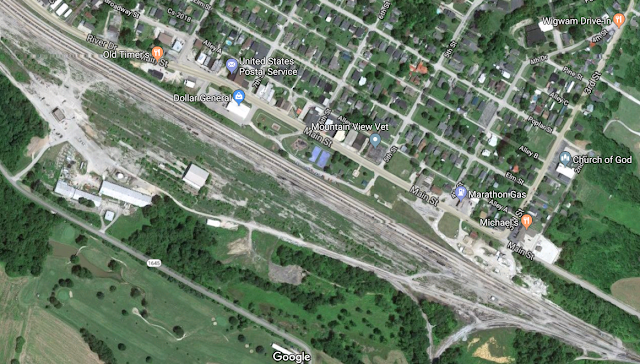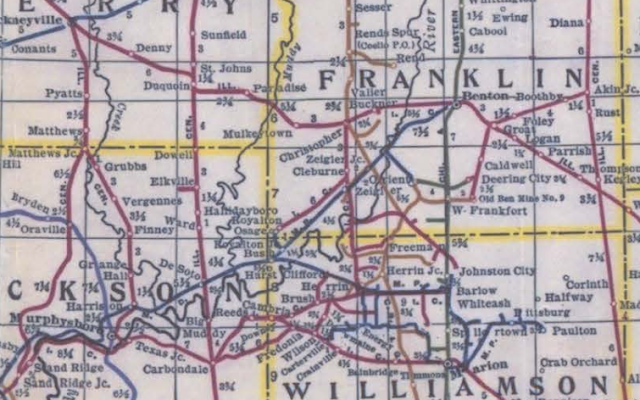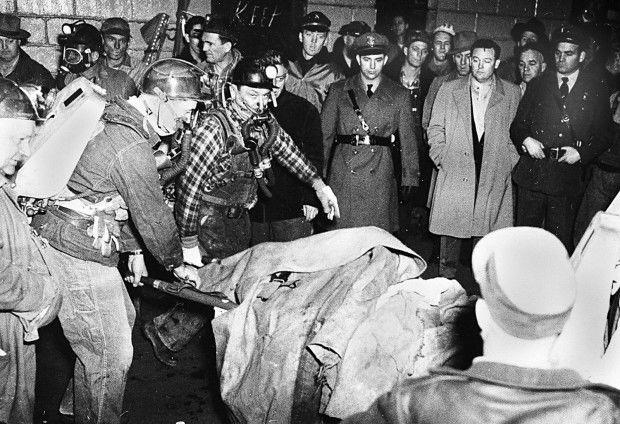(
Satellite, it is a lot easier finding the location when both tracks still exist)
 |
Judy Goby Oxtoby posted
Cincinnati, Hamilton & Dayton Railroad
A passenger train speeds past a track crossing and railroad switch tower identified as a Big Four and C.H. & D Tower at Chrisman, Edgar County, Illinois, about 1915.
Bill Edrington Thanks for sharing this. This was “Rose” Tower, which sat in the southwest quadrant of the crossing of the Big Four (New York Central System) and Cincinnati, Hamilton & Dayton (later the Baltimore & Ohio) on the south side of Chrisman. The train in the photo is a southbound Big Four passenger train heading toward Paris.
|
The Big Four line was the
Egyptian Line. The 2005 SPV Map shows CI&W, Cincinnati, Indianapolis & Western as the B&O predecessor. It doesn't list the CH&D. So did the CH&D start building in Ohio and then changed its name to CI&E before it got to Illinois? I checked the 2005 SPV Map volume that covers Ohio and Indiana, and it does show CHD as another predecessor to B&O. The specific predecessor in Illinois doesn't matter to me because by 1928 it was the B&O line between Decatur, IL, Indianapolis and Cincinnati.
Eric Berg
posted two photos with the comment: "Not sure if these at Rose tower have been posted here, but here are 2 more I found today. Says, "Big Four and CH&D tower Chrisman, Ill No. 7 Photo by Williams". 2nd one is unlabeled."
 |
| 1 |
 |
| 2 |
Bill Edrington
posted three photos with the comment: "Rose Tower controlled the crossing of the Big Four’s Cairo Line and the B&O’s Indianapolis-Springfield, Illinois line at Chrisman, Illinois. The B&O line changed hands several times and at one time was part of the Cincinnati, Hamilton & Dayton, which is why the first photo below is labeled the way it is. The tower stood at the edge of a field in the southwest quadrant of the crossing of the two railroads, and so the photo shows a southbound Big Four passenger train heading toward Paris. A later photo of Rose, as well as an early one of the passenger depot at Chrisman, are also included."
Doug Nipper: Wow, I was just at that crossing a couple of Fridays ago. You can still see pipe carrier foundations in the southwest quadrant, so that's definitely where the tower was. The Decatur and Eastern Illinois (Watco) owns both lines now, and two connecting tracks south of the crossing allows them to get from the ex-NYC to the south to either side of the diamond on the ex-B&O side. Trees now surround the crossing almost entirely. My friend works for CDL, which does the signal work for Watco, and he says they plan to retire the automatic interlocking and replace it with a gate. Same with the ex-NKP crossing at Metcalf a few miles to the west.
The ex-NYC north towards the old coal loop at Vermilion Grove is used only for car storage, and that business is phenomenal now. So they only cross the ex-B&O to make a move onto that storage track.
Mark Egebrecht: When was the tower razed?
Bill Edrington: Mark Egebrecht - I don’t know for sure, but by April 30, 1961, when Timetable #9 took effect, Rose was an automatic interlocking. So my best guess is that the tower was closed and torn down sometime in the late ‘50s. It was still a 24-hour office in 1955.
James Kehn: Holy smokes! I just sent a whole bunch of tower photos to the modeling committee of the NYCSHS and here pops up another. I call these 2X style for the number of "X's" on the long side. This is a nice tower! Thanks for posting.



























































